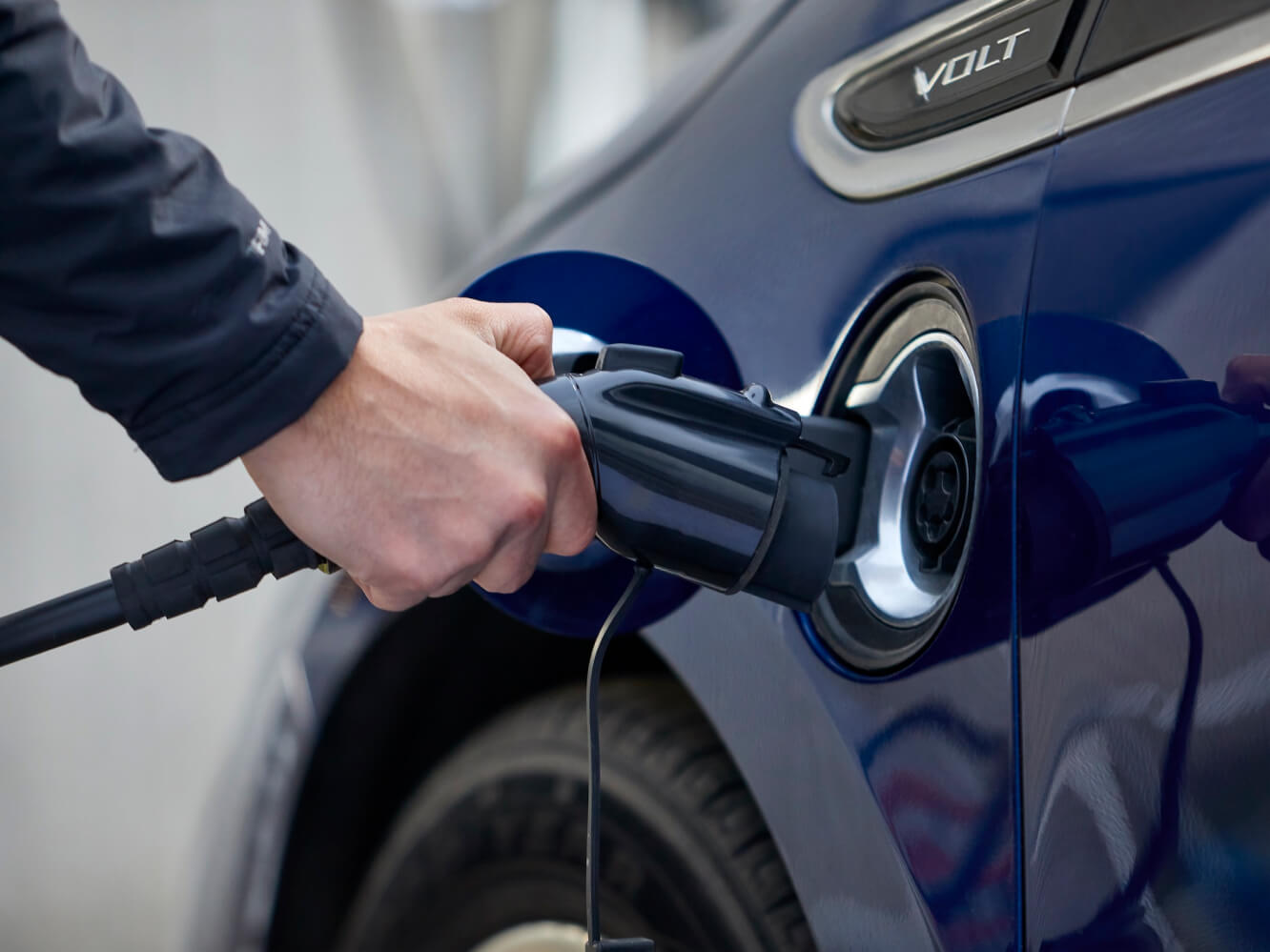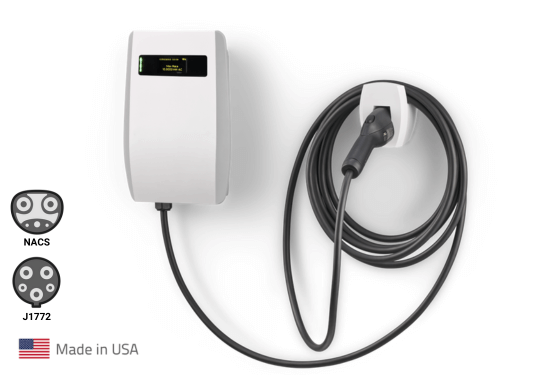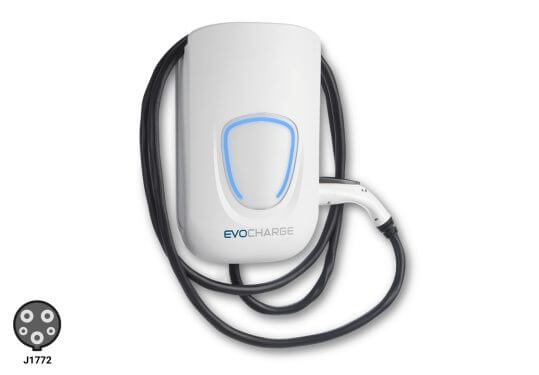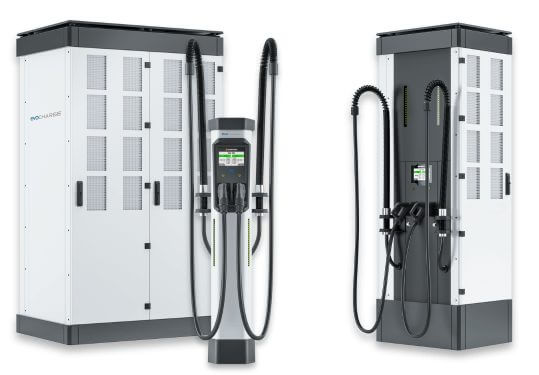Why EV Chargers Have Become a Must-Have for Multifamily Housing
A few years ago, offering EV charging for multifamily housing properties was a welcome amenity but few people depended on it. Now, as electric vehicle (EV) adoption continues to spread, it’s becoming a necessity for attracting and retaining tenants. That’s right, for residents of apartments, condominiums and other multifamily housing properties, EV charging can be a deciding factor when choosing where to live.
But tenant demand isn’t the only driver. Local and state governments are passing regulations that encourage or even require new multifamily housing projects to include EV-ready parking. Some municipalities even offer financial incentives for property managers and owners who install EV charging stations. If you’re ready to boost the appeal of your property and pull in new EV-driving tenants who want to live in a community that’s forward-thinking and future-ready, this is the quick guide for you.
EV Charging Options for Apartments and Condominiums
Not all EV chargers are created equal, and you want to get the right setup so you don’t waste your investment. Understanding the different types of EV charging will help you determine the best chargers for your property.
Level 1 Chargers
The slowest option, Level 1 EV chargers are plug-and-charge solutions that often come with a new EV purchase. They are cheap to install, however they are so slow that this type of charger is rarely practical for shared-use parking. In addition, as EVs continue to get more powerful with longer range capacities, these chargers are becoming increasingly obsolete.
Level 2 Chargers
These 240v chargers deliver up to 45 miles of range per hour and are considered a great value for their mix of speed, efficiency and cost. Level 2 chargers are commonly used for multifamily housing and may also include smart functionality for user access and owner management. For those looking to plug in and charge for a few hours at a time or overnight, this solution is often ideal.
Level 3 DC Fast Chargers
Level 3 DC Fast chargers are the quickest option on the market. They rapidly charge vehicles — usually in under an hour — but they require heavy electrical upgrades and a much larger investment. Currently, these aren’t commonly seen at apartment buildings or condos. Instead, they are used to charge commercial fleets and you see them alongside interstates and busy urban areas.For most multifamily housing properties, Level 2 charging strikes the right balance of affordability and functionality but some buildings are starting to offer DC fast charging. EvoCharge offers Level 2 and DC fast chargers designed to fit your needs.
Your Site’s Readiness and Electrical Capacity
Before purchasing and installing EV chargers, assess your site’s readiness. Considerations should include:
- Electrical Capacity: Does your electrical panel have enough available load? If not, upgrades may be required. In addition, if you get Level 2 or DC fast chargers, you will need a professional to install them. Consult a local certified electrician for assistance.
- Parking Access: Determine where your chargers will be located. Will you have dedicated tenant spots, shared spaces or EV chargers in visitor parking spaces? The distance from your panel to your chargers can also have a significant impact on the installation costs.
- Access Control: Do you want charging stations with a network that restricts charging to residents only, or are you considering more widespread availability? With EvoCharge, control charging access with issued RFID cards or fobs, or through user app accounts.
As part of your rollout, work with a certified electrician or energy consultant to ensure you are in compliance with state and municipality codes. For example, you may need electrical permits for new wiring or panel upgrades, ADA compliance or zoning approvals. Since codes vary throughout the country, you don’t want to make any costly mistakes that will increase costs, so an expert is recommended to guide you.
Cost Considerations and Incentives
Installing EV chargers requires an upfront investment, however hardware costs vary by charger type and features. Installation costs can also vary, depending on factors like wiring, electrical upgrades and whether any trenching is needed. If you are installing Level 2 chargers, your largest cost will likely be installation. For Level 3 chargers, both the equipment and installation have significant investments
Despite the upfront costs, many property managers and owners are surprised at how much financial support is available in the form of:
- Utility rebates: Many utilities offer some kind of reimbursement for electrical vehicle supply equipment (EVSE) such as EV chargers. This can include the hardware and sometimes a portion of the installation cost.
- Tax credits: These vary, especially at the state level, so check to see what you may qualify for in your area.
- Local or State Grants: Some municipalities and states offer competitive grants aimed at expanding EV infrastructure. Look into your area for more information as to whether you can lower your out-of-pocket investment.
Who Pays and Who Profits? The Return on Your Investment
Multifamily property managers and owners have several options for structuring their EV charging investment. Each setup has its tradeoffs, in terms of control and potential revenue, so it’s really about preference and how much you care about things like tenant retention. For example, you can install and maintain the chargers, offering them as an inclusive amenity or bundled with rent, or you could price the charging as a paid offer to recoup your cost quicker. Either way, you get the flexibility on how to offer your charging and to change it at any time. With the EvoCharge Network, it’s easy to manage your EV charging stations, track usage and do so much more.
Rollout and Tenant Adoption
The more accessible and user-friendly your EV charging stations are, the more your tenants will value and use them. This means, once your chargers are installed, communicating how they will work is key to driving adoption. Announce the new amenity through your online newsletter or website, add info to your digital tenant portals or touch on the addition at a building event.
You should also have onsite signage that clearly marks your new charging areas and how they work. Include a guide for new EV drivers, whether there’s a reservation system and how that works. Also include your pricing, to avoid confusion, if you aren’t offering charging as an inclusive amenity.
The bottom line: Share information so your chargers become a simple, everyday fixture for your tenants.
Future-Proof Your Property
While you need EV chargers today, consider what you’ll need three or even five years from now. EV adoption will continue to climb, so try to anticipate your needs beyond today’s demand. Even if you only want a few chargers to start, consider scalability, your electrical setup, installation and more.
With EvoCharge, the right product and installation setup and some room to grow, you can minimize disruptions, keep tenant satisfaction up and avoid unnecessary costs later.
Choosing the Right EV Chargers for Your Multifamily Housing Needs
There are so many options on the market, but you don’t want just anything. When it comes to finding a balance of reliability, scalability and ease of management, the Level 2 and DC fast chargers from EvoCharge are designed with multifamily applications in mind. Our chargers are made in the USA and deliver trusted performance with key benefits which include:
- Simple Management Tools: From usage tracking to tenant or guest billing, you’re at the controls with an easy-to-use, cloud-based software. Get all the data you need, when you need it.
- Smart, Durable Design: With EvoCharge, your EV chargers are built to last with a 3-year warranty and they’ll even enhance your property’s appearance.
- Scalable Solutions: With the EvoCharge Network, it’s easy to scale your charging needs. Our Level 2 50 amp charger has adjustable amperage from 16 to 50 amps and network load management, making it easy to work with just about any electrical setup.
Remember: Adding EV chargers to your multifamily housing property is more than an amenity, it’s an investment in attracting and retaining tenants, increasing your property value and future-proofing your building.Ready to explore the right solution for your multifamily housing property? Connect with EvoCharge to schedule a consultation or request a quote.



